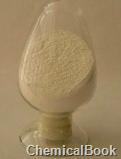Background and overview[1]
Lignin is a complex phenolic polymer composed of phenylpropane structural units connected through ether bonds and carbon-carbon bonds. 2-Ethoxy-5-(1-propenyl)phenol is a very important organic chemical raw material and is widely used in chemistry, chemical industry, medicine, food, materials and other fields. It can be used to make phenolic resin. After separation and purification, it can be used as a bactericide and disinfectant. It is an intermediate for spices, fuels, and drugs. It can be used to synthesize medicines, dyes, rubber antioxidants, monomer inhibitors, and petroleum antioxidants. Coagulants, etc. Therefore, catalytic hydrogenolysis of lignin to prepare phenolic compounds will bring huge benefits and is of great significance.
The research report specifically used tetralin and phenol as hydrogen-donating solvents to prepare the phenolic compound 2-ethoxy- 5-(1-propenyl)phenol. Using tetrahydronaphthalene, dihydroanthracene, indan, decalin, cyclohexane, dihydrophenanthrene, isopropanol, etc. as hydrogen donors, small molecules were prepared by using microwave technology to enhance the degradation of lignin under acid catalysis. Phenolic compound 2-ethoxy-5-(1-propenyl)phenol. Most of the above-mentioned hydrogenolysis of lignin requires the addition of an external hydrogen source and is carried out under high temperature and high pressure conditions. The requirements for equipment are relatively stringent and energy consumption is large. Although a few reports have relatively mild reaction conditions, the phenolic yield is low, or the presence of a high boiling point reaction medium is required, or tetralin and other hydrogen donating agents are used, and such hydrogen donating agents are relatively expensive.

Preparation[1]
A method for preparing 2-ethoxy-5-(1-propenyl)phenol by direct hydrogenolysis of lignin: add lignin and catalyst in a pressure-resistant kettle in a certain proportion, add solvent to disperse and mix, and Under certain temperature conditions, the solvent generates hydrogen in situ. After catalytic hydrogenolysis for a certain period of time, the product is extracted and separated. For GC-MASS analysis, the extractant and product can be separated by rotary evaporation. Wherein, the solvent is used as a hydrogen donating agent at the same time, and is one or more of monohydric alcohol, dihydric alcohol, trihydric alcohol, water, and alkanes; the preferred hydrogen donating agent is methanol, ethanol, propanol, and formic acid. , one or more of ethylene glycol, α-hydrogen-containing secondary alcohol, 1,2-propanediol, glycerol, water, and cyclohexane. The catalyst is one or more of metal chloride, tungstate, monovalent and divalent metal molybdate, Pd/TiO2, etc.; the preferred catalyst is palladium chloride, ruthenium chloride, chloride One or more of cobalt, phosphotungstic acid, nickel molybdate, barium molybdate, Pd/TiO2, Ru/TiO2, Au/TiO2. The mass ratio of lignin to catalyst is 1:0.01-1:10; the preferred mass ratio of lignin to catalyst is 1:0.03-1:1; the mass ratio of lignin to hydrogen donating agent is 1:50-1:300; the preferred mass ratio of lignin to hydrogen donor is 1:50-1:150. The temperature of the hydrogenolysis reaction is 150°C-350°C, and the reaction time is 1h-20h; the preferred hydrogenolysis reaction temperature is 180°C-250°C, and the reaction time is 1h-4h; the phenols The main compound products are 4-propylguaiacol, 4-propylsyringol, 4-propylphenol, 2-ethoxy-5-(1-propenyl)phenol, syringol, and propenylphenol Phenolic compounds.
Main reference materials
[1] CN201310284961.5 A method for preparing phenolic compounds by direct hydrogenolysis of lignin

 微信扫一扫打赏
微信扫一扫打赏

